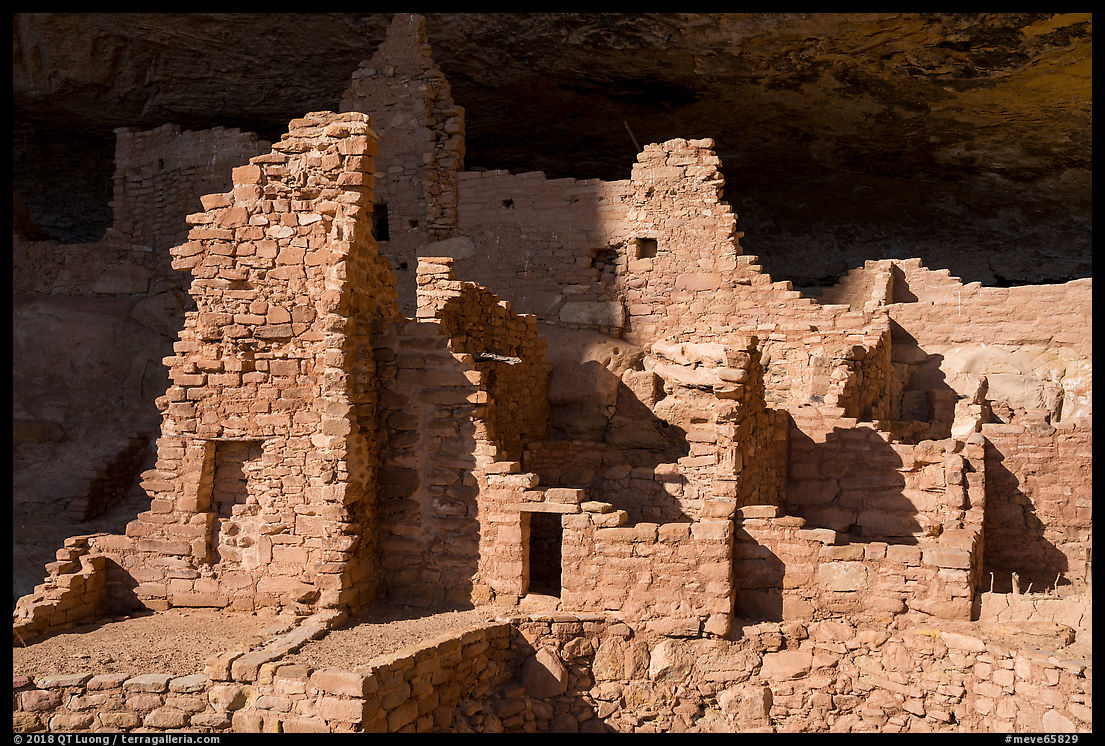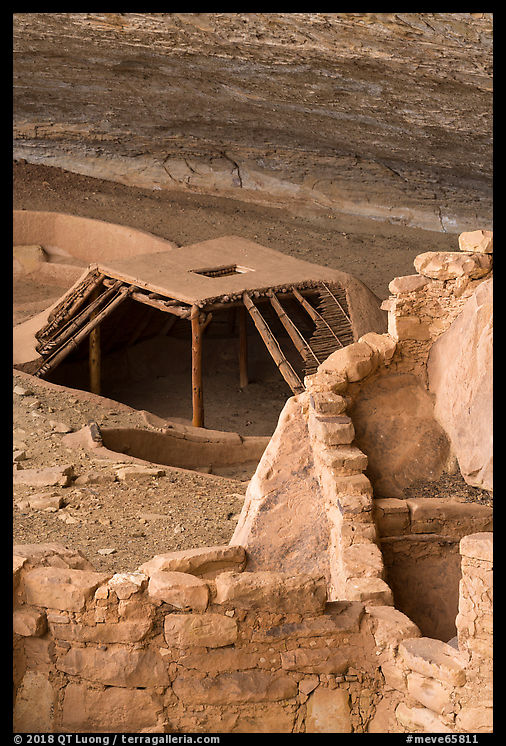Wetherill Mesa: the Quieter Side of Mesa Verde National Park
No Comments
Wetherill Mesa, located on the west side of Mesa Verde National Park, is a long and narrow peninsula of land rising above deep canyons. Its rock alcoves are home to structures as impressive as those found on Chapin Mesa, however the experience of visiting is quite different.
Many visitors rush through the landscape of the park towards the ruins, but the scenery is quite beautiful, especially in the autumn when the mountain shrub plant community brightens the slopes on both sides of the road.

Wetherill Mesa is more wide-open than Chapin Mesa, especially since most of the trees are burned. Mesa Verde, unlike other national parks, did not implement control burns due to the omnipresence of archeological resources, and this has resulted in large wildfires that burned two-thirds of the park’s area within the last 15 years.

What differentiates a visit there is that Wetherill Mesa forms the quieter side of the park, seen by less than a quarter of the visitors to Mesa Verde National Park. While Mesa Verde became a national park in 1906, it was not until 1961 that major sites at Wetherill Mesa were excavated and stabilized, during the three-year Wetherill Mesa Project, one of the most important archeological works in the country up to that time. One of the goals of the National Park Service in opening Wetherill Mesa to the public in 1973 was to relieve congestion at Chapin Mesa, but they were not quite successful, since only a fraction of visitors make the trip there.
It could be because the winding 12-mile road from the Far View Junction to Wetherill Mesa Information Kiosk takes 45 minutes to drive. Past that point, no motorized vehicles are allowed, so Wetherill Mesa is a good place to spend a slower-paced day on foot away from the congestion of Chapin Mesa. The 5-mile paved Long House Loop gives hikers and bikers access to three overlooks over cliff dwellings, and is also the trailhead for Long House. The loop used to be serviced by a free tram, which stopped operating in 2015 for administrative reasons.

The star attraction of Wetherill Mesa is Long House. It was a named so by the Wetherill brothers because the structure stretches for the full extent of the largest occupied cave in Mesa Verde. Although Cliff Palace is universally mentioned as the largest cliff dwelling in North America, Long House, set up in a longer 300-foot alcove, is essentially as large, with the same number of rooms (150) and kivas (21). Yet, it is the least visited of the park’s five major structures – the others are Cliff Palace, Spruce Tree House, Balcony House, and Step House.

I thought that the 2-hour ranger-led tour (2.25 miles RT), the only way to visit the site, was more special than Cliff Palace because you climb two ladders and go behind some of the ruins. Tour tickets are inexpensive but must be picked in person at the new Visitor and Research Center right at the entrance of the park or the Colorado Welcome Center in Cortez, up to 2 days in advance. I was surprised that tickets for the next day, a weekday in October, were sold out, but usually, there are last minute cancellations and the ranger let me join the tour with a ticket for the following day.

The light is challenging at Long House, since it faces southwest and is fully sunlit at midday. In mid-October with the 2 PM tour, although the structure was partly in the sun and partly in the shade, enough of it was in the sun and enough in the shade for images of diverse character.

The other structure on Wetherill Mesa open to the public is Step House, which can be visited freely during opening hours when a ranger is present. The site is accessed via a paved 1-mile loop trail that offers views of Long Canyon.

It is an unusual site in that two construction periods are found in the same alcove. Since visitors can walk through the structure, an image without people in it can require a bit of patience, but I was mostly interested in its details, such as the reconstructed pithouse of the Basketmaker period (A.D. 626) contrasting with the masonry dating to the classic Ancestral Pueblo period (A.D. 1226).


